Affiliate links on Android Authority may earn us a commission. Learn more.
What's the best smartwatch? We tested dozens, here are our top 8
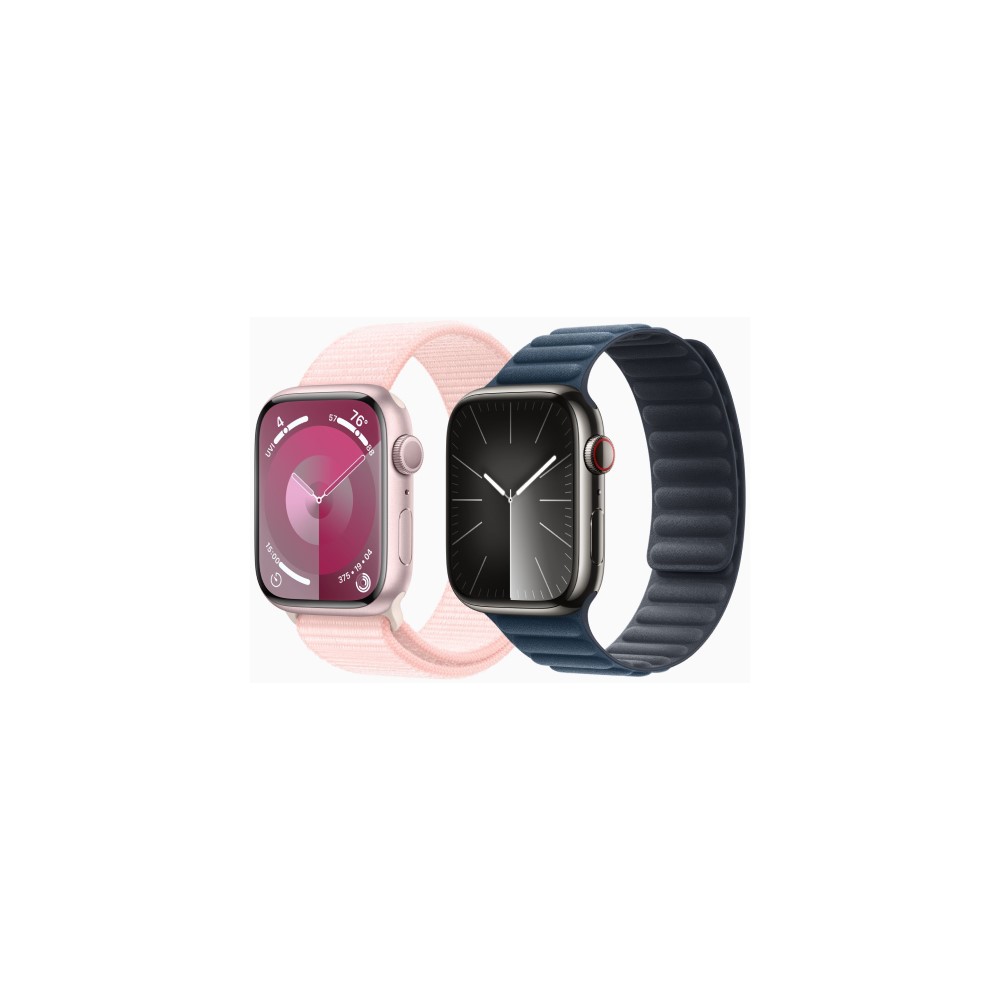
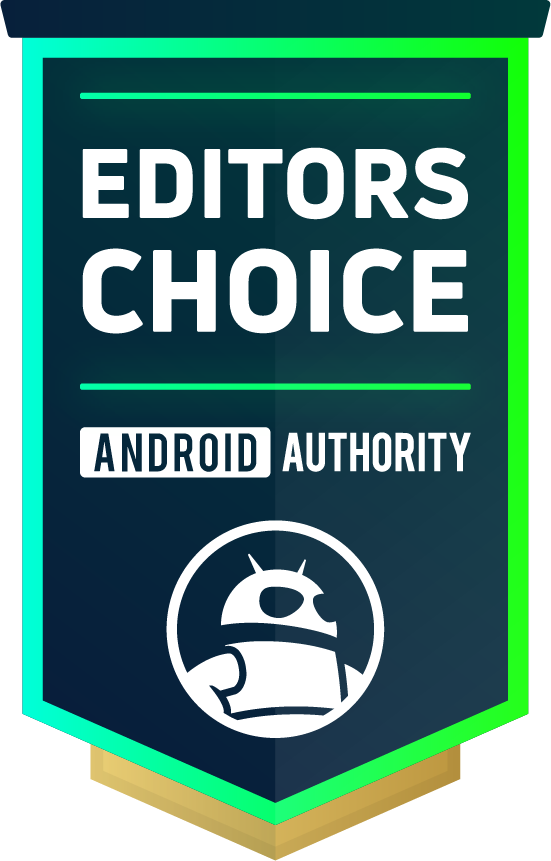
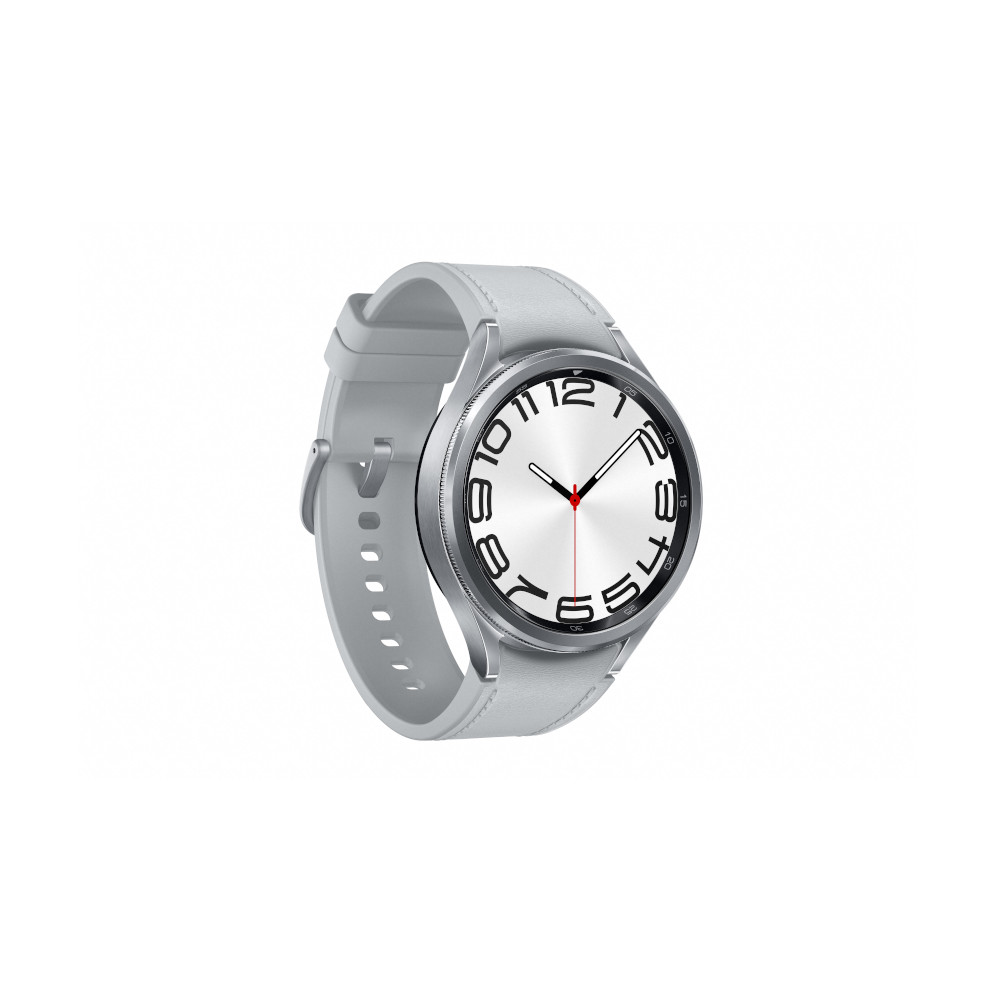
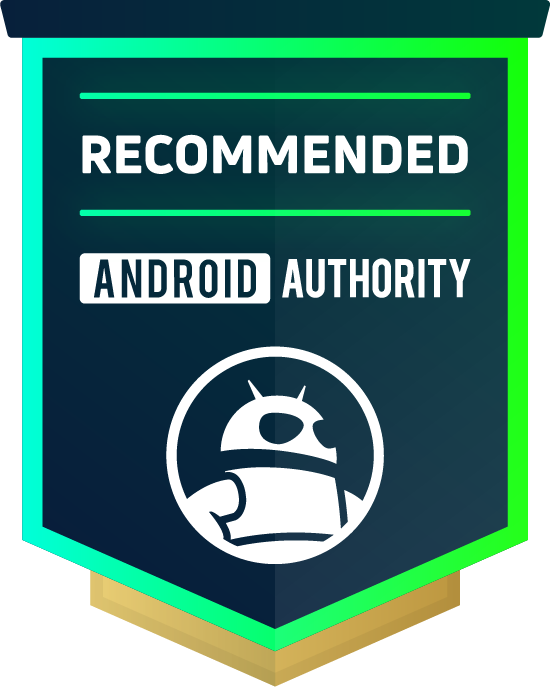

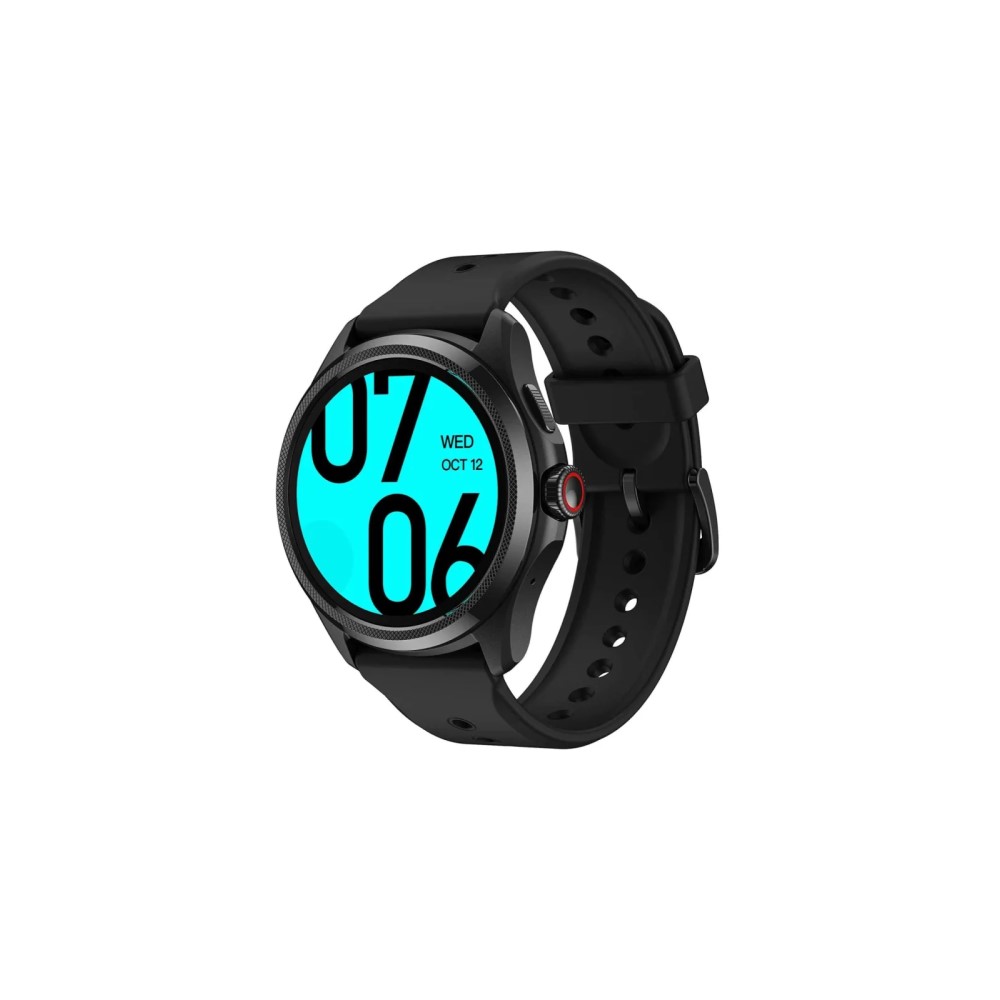


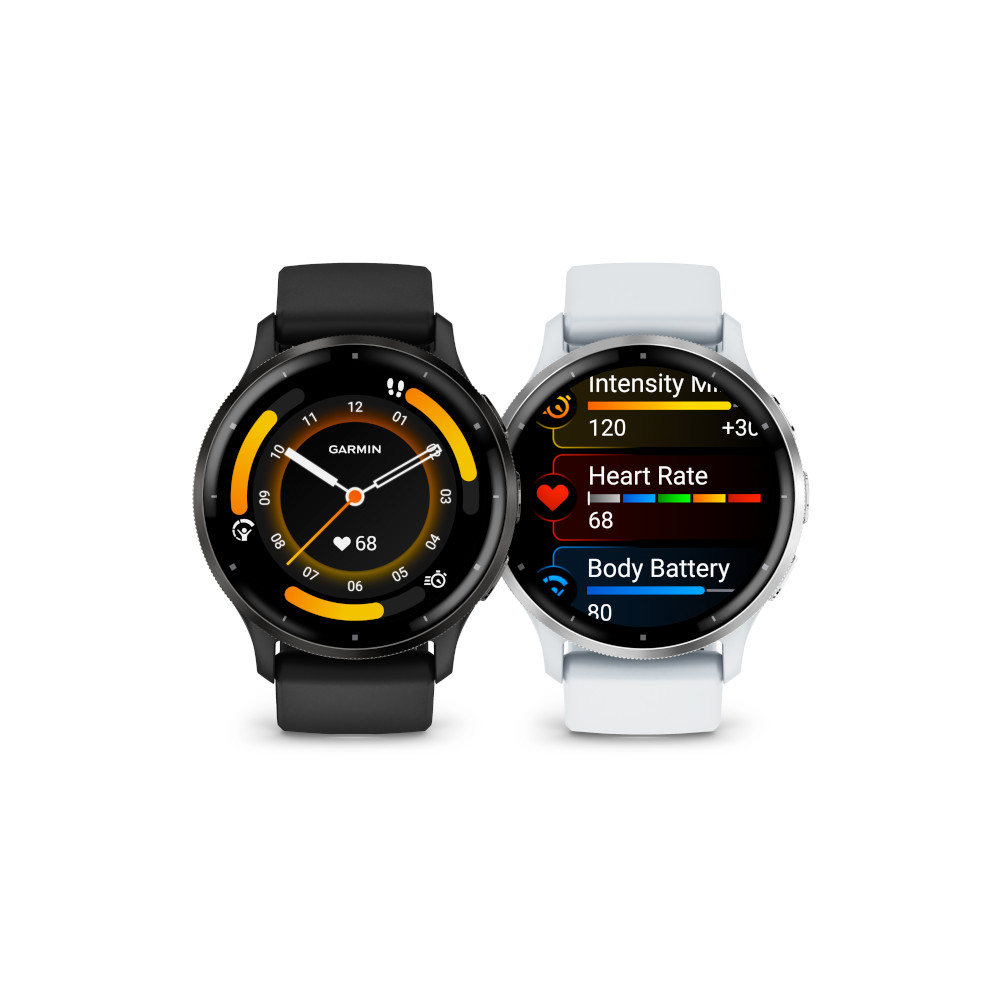




Samsung has officially launched the Galaxy Watch 7 and Galaxy Watch Ultra. The new smartwatches include upgraded chipsets and Galaxy AI enhancements, while the Ultra brings a new body shape, added durability, and a larger battery. We expect them to replace the Galaxy Watch 6 on this list, but we will update this guide once we have fully reviewed both devices.
Choosing the best smartwatch comes down to four questions:
- Do you care what brand makes it or what platform it runs on?
- What smart features are you interested in using?
- What activities do you plan to track with the device?
- Are there any special features you need?
Once you know what matters most, picking the right smartwatch is easy. We’ve reviewed the most popular wearables, including the best fitness trackers on the market, to narrow down users’ choices. Keep reading to see our finds for the best smartwatch you can buy.
The Apple Watch Series 9 is the best smartwatch available


From its user-friendly software experience to its nearly limitless app library, the Apple Watch is a tough device to match. Unfortunately, you have to be an iOS user to enjoy it. If you fit into that camp, the Apple Watch Series 9 lands neatly into Apple’s pattern of launching very successful devices.
As always, the touchscreen is highly responsive, and we love the upgrades added with watchOS 10, especially the return of glanceable widgets. Thanks to the device’s powerful chipset, the software is snappy and efficient. Siri can now process queries on the device, and users can streamline actions with Double Tap, a one-handed gesture control that completes simple actions with the tap of two fingers. The latest software also improves wellness tools like mental health features, workout tracking for cyclists, and medication management. Meanwhile, wherever Apple falls short in native software, a quick search in the App Store brings the device back up to speed.
Third-party app support for iOS users is unparalleled, and the user experience leaves little to be desired.
From apps to notifications, integration with the iPhone is seamless, and navigation is the most intuitive we’ve found on a smartwatch. In addition to on-wrist phone calls, users can tap into offline music playback and audiobooks and make purchases via Apple Pay. The Series 9 is also one of the best LTE smartwatches available for disconnecting from your phone.
On the tracking front, the device measures all the basics: steps, calories, distance, floors climbed, resting and active heart rate, sleep, VO2 max, blood oxygen saturation, sinus rhythm, temperature, and menstrual cycles. All of these it does well, and the Health and Fitness companion apps are thorough and easy to use. One pain point, though, is the device’s battery life. Like older generations, the Series 9 will last just over its 18-hour claim. Low Power Mode helps squeeze out additional use between charges, but it’s a far cry from specs like Garmin’s. Fortunately, with fast charging, the experience is manageable.
What is your favorite smartwatch brand right now
If you’re packing an Android phone but want a similar experience, we recommend the Galaxy Watch 6 series (below). Meanwhile, the Garmin Venu 3 (also below) will provide deeper workout analysis, more advanced training tools, and much better battery life. Alternatively, if you want an Apple Watch but the Series 9 doesn’t line up with your budget, the SE 2 ($269.99 at Amazon) has a lot to offer at a lower price. At the other end of the spectrum, the Apple Watch Ultra 2 ($759.99 at eBay) comes at a higher price but packs some great tools for adventurous users.
What makes it stand out
- Unmatched app support: Users can find an app for virtually every need in the App Store. If the watch doesn’t offer something natively, the odds are good you’ll find a third-party option.
- Seamless user experience: Apple has earned a reputation for device integration with the Apple Watch line. The user experience is nearly foolproof.
- Flawless design: Form and function collide in this good-looking device fit for any occasion.
- Reliable GPS: Apple’s GPS accuracy is among the best we’ve tested, and we’ve tested a lot.
- Accurate health tracking: If wellness is a priority, the Apple Watch delivers advanced health tracking that’s accurate and helpful.
Best of the rest: 7 other smartwatches worthy of your consideration
If you own an iPhone, the Apple Watch Series 9 is absolutely what we recommend. However, there are plenty of great smartwatches available besides Apple’s offerings. All of the alternatives below work with Android phones. The Garmin and Withings devices also work with iPhones.
- Samsung Galaxy Watch 6 series: Samsung’s latest series offers small but valuable upgrades over the previous device line. The return of the Classic model also gives rotating bezel lovers a new option.
- OnePlus Watch 2: For the Wear OS experience with the best battery life, look no further than the OnePlus Watch 2, featuring unique dual-chip architecture.
- Mobvoi TicWatch Pro 5: Another solid Wear OS option, Mobvoi’s latest model boasts powerful internals, a unique dual display, and a useful rotating crown.
- Google Pixel Watch 2: The Google Pixel Watch 2 is the best choice for users interested in the Fitbit ecosystem. It blends the best of Fitbit with a clean Wear OS experience.
- Garmin Venu 3: The Garmin Venu 3 is the best smartwatch from Garmin. Building on the success of the Venu 2 Plus, it’s a great smartwatch and an even better fitness tracker.
- Mobvoi TicWatch E3: The best cheap Wear OS smartwatch, Mobvoi’s Ticwatch E3 offers a crisp display, a rugged design (with an IP68 rating), and NFC for mobile payments.
- Withings ScanWatch 2: The best hybrid smartwatch available is the Withings ScanWatch 2. It stands out with clinically validated AFib detection and all-around great health tracking.
The Samsung Galaxy 6 and Classic are the best smartwatches for Android users
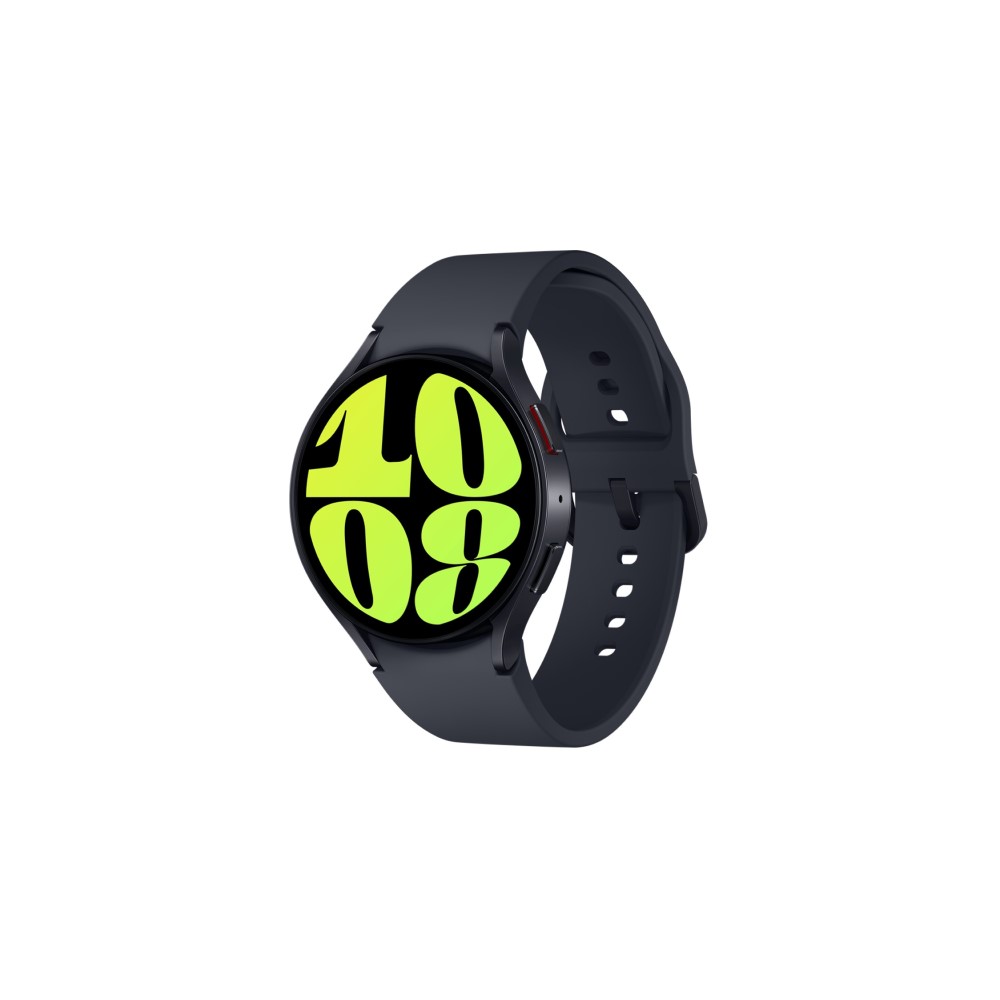



If the Apple Watch isn’t in the cards for you, another option is a device from the Wear OS family. We recommend the Galaxy Watch 6 series, Samsung’s latest smartwatch duo. The series includes a base and Classic model with nearly identical experiences. The standard model is available in 40mm and 44mm guises. The 1.3- and 1.5-inch displays feature shrunken bezels on thinner cases for a more compact and comfortable watch. Beneath its skin, the Galaxy Watch 6 features a larger battery in both body sizes and an upgraded chipset with 2GB of RAM and 16GB of internal storage. This cocktail makes for a snappy experience.
The Galaxy Watch 6 series also boasts Wear OS 4 with One UI 5 Watch running on top. That means several upgraded app experiences, including Google Calendar, Gmail, Audible, and more. For health and fitness tracking, the Galaxy Watch 6 includes a BioActive sensor trio that monitors heart rate, heart health via an ECG, and body composition. SpO2 and sleep monitoring are still features, while the temperature sensor offers additional uses. Through a dedicated app, users can now use the sensor to read the temperature of external objects.
As mentioned, the base Galaxy Watch 6 isn’t the only device in the lineup. The biggest difference when comparing the Galaxy Watch 6 vs 6 Classic is the latter’s rotating bezel. The highly-anticipated return of this design feature lived up to its hype during our Galaxy Watch 6 Classic review, making navigation easier than ever and giving the watch a refined aesthetic. The pricier model also features larger dials (43mm and 47mm) and stainless steel construction.
It’s worth noting that the Galaxy Watch 5 Pro ($374 at Amazon) is also still an option. It remains Samsung’s top adventure watch, with a premium build and large battery. The Galaxy Watch 4 ($199.99 at Samsung) or Galaxy Watch 4 Classic ($167 at Amazon) can also be picked up for cheaper, but they have limited software support left.
What makes it stand out
- Still an active guest at the Wear OS party: The Samsung Galaxy Watch 6 series runs on the latest version of Wear OS, with great software perks you won’t find everywhere.
- Plenty of metrics to keep you busy: These devices are packed with useful health sensors for monitoring all your important metrics. The new temperature sensor tricks will be useful for some.
- The bezel returns: The Galaxy Watch 6 Classic may be worth buying for its rotating bezel alone. We fell in love with the Galaxy Watch 4’s version, and the latest model only improves it.
The OnePlus Watch 2 is a Wear OS device with fantastic battery life

Anyone deciding between Wear OS watches will likely want to consider the OnePlus Watch 2 for its impressive battery life alone. The device is a solid example of a Wear OS device, with the best of Google’s app library and the Play Store for downloading more third-party tools. However, this watch doesn’t just run Google’s software. It features dual-chip architecture, housing the Snap W5 gen 1 running Wear OS 4 plus a second “efficiency chipset” for running RTOS. This creates a dynamic user experience with distinctive use modes for extreme battery savings.
In smartwatch mode, with the full gamut of Wear OS tools available and the second chip handling background tasks, the watch lasts up to 100 hours between charges. In Power saver mode, Wear OS disappears from the user experience, stretching battery life for days more while still offering basic smart features and health and fitness tracking functions. During our review, we found the software experience smooth and the device responsive in both modes.
The watch also features a broad range of sport modes for diverse fitness tracking, as well as heart rate, sleep, and SpO2 monitoring. Unfortunately, it does not feature a temperature sensor like other options from the Wear OS family. It is also available in just one 47mm case size, which may be too large for some wrists.
What makes it stand out
- Unique dual-chip architecture: The device features not one but two distinct chips, each running a separate OS. The hybrid experience allows for powerful processing and unique power use modes.
- Incredible battery life: Thanks to its revolutionary dual-OS and massive battery cell, the OnePlus Watch 2 offers uses up to 100 hours of use time between charges. It also supports fast charging.
- The latest software out of the box: It’s also running the latest Wear OS right out of the box, so there’s no waiting for software updates that may or may not arrive.
The Mobvoi TicWatch Pro 5 is another solid Wear OS device


Mobvoi’s TicWatch Pro 5 landed with a boatload of updates, both inside and out. Google’s Wear OS software and Qualcomm’s Snapdragon W5 Plus Gen 1 chipset headline the device. This combination produces a powerful smartwatch with reliable performance, impressive battery specs, and a user experience that is smooth, efficient, and loaded with features.
For athletes, the TicWatch boasts more than 100 workout modes and all-day health and activity monitoring. It also tracks advanced training metrics such as VO2 max and recovery time. Within a new health-focused companion app, Mobvoi beefed up its sleep-tracking offerings with added data fields, though we weren’t overly impressed with the device’s accuracy. The watch also offers top smartwatch features, including Google Maps, Google Wallet, and Google Pay. For everything else, users can access the Google Play Store.
With efficiency improvements and a 628mAh battery, Mobvoi claims a full charge lasts up to 80 hours in Smart Mode or up to 45 days in Essential Mode. With typical use and workout tracking, the device lasted closer to 70 hours during our Mobvoi TicWatch Pro 5 review, and we were stoked about it.
On the design front, the device also now features a useful digital crown for easier navigation. The crown replaces the dual set of dials on previous models for a much sleeker overall look. Meanwhile, the 1.43-inch touchscreen remains bright, vivid, and responsive. We’re still huge fans of Mobvoi’s dual display, and the company even added more functionality to the low-power screen. Now, users can view performance details during workouts as the screen displays colors corresponding to specific heart rate zones. We found this feature extremely useful during our review period.
What makes it stand out
- A promising Wear OS future: Other eligible Mobvoi devices remain patiently waiting for Wear OS 3.5, but the TicWatch Pro 5 boasts the new software out of the box. It’s also likely eligible for a future Wear OS 4 update.
- A unique dual display: Mobvoi’s power-saving dual display with customizable backlights offers even more on-screen data and functionality than ever.
- Easier navigation with a digital crown: Though certainly not the first smartwatch to feature a digital crown, Mobvoi’s adoption of the feature lends itself to seamless user interactions.
The Google Pixel Watch 2 is the best Fitbit smartwatch

Though not a device from Fitbit’s original stable, the Google Pixel Watch 2 is the best smartwatch for anyone in the Fitbit ecosystem. The watch features thorough Fitbit integration and advanced sensors. Meanwhile, its unique rounded glass display and integrated bands provide a sharp, minimalist look, unlike any other device on this list.
On the inside, the watch boasts Google’s latest Wear OS 4 platform in raw form, with all the brand’s top apps and tools. Users will find access to Google Maps, Wallet, Assistant, Calendar, and even Gmail, as well as thorough third-party app support via the Google Play Store.
For Fitbit fans, the Pixel Watch 2 offers access to everything the brand does well. This includes activity tracking, Fitbit’s ECG app, detailed sleep and sleep tracking, and key tools like Body Response. With its EDA, temperature, and upgraded heart rate sensor, the watch usurps the Sense 2 as the brand’s most powerful health companion. All while also supporting Google’s Wear OS. In other words, this is a one-of-a-kind line offering the best of both worlds.
Compared to its predecessor, the Pixel Watch 2 introduces key upgrades and considerable refinement. It adds automatic workout detection and irregular heart rate notifications and delivers much better battery specs. It also ships with a fast-charging cable to help users spend more time with the watch on their wrists. During our Pixel Watch 2 review, we were happy to see the device last a complete day between charges, even with a GPS workout. It’s not a perfect device, but it is considerably better than its predecessor and a solid pick for Fitbit enthusiasts.
What makes it stand out
- Most powerful Fitbit available: Recently, Fitbit has continuously stripped its top smartwatches, the Sense and Versa lines, of key features and support. Meanwhile, the Pixel Watch line gets more powerful and feature-packed.
- The full power of Google: A Fitbit device with Google’s top apps is an easy sell. The Pixel Watch 2 is a capable fitness companion and a loaded smartwatch.
- Advanced health sensors star: The Pixel Watch 2 adds a temperature sensor, EDA sensor, and an upgraded heart rate sensor to offer users the most advanced health tracking available on a Fitbit device.
The Garmin Venu 3 is the best smartwatch from Garmin


Garmin’s Venu 2 was a meritorious effort from the company. We nearly named it the best device of 2021. With more refinement and added features, the Venu 2 Plus blew its predecessor away. Beyond sibling comparisons, our reviewer dubbed it “one of the most well-rounded wearables we’ve ever used.” Now, the Venu 3 continues Garmin’s success with a few more features on a powerful device. It is easily one of the best Garmin watches you can buy.
So what’s different? First, the Venu 3 series brings back a second case size, offering a better fit for more users. The Venu 3 features a 45mm case, while the Venu 3S offers a 41mm option. Both models are priced the same, so there’s no punishment for having larger wrists. All sizes also add multi-GNSS support. Building on the already fantastic Venu 2 Plus user experience, Garmin updated device navigation, added an expanded shortcuts feature, and introduced more watch faces. Users can even personalize font sizes for readability.
The most exciting upgrade on the new series is automatic nap detection, a first in Garmin’s stable. The device records all the usual sleep stats plus HRV tracking for more sleep details. In the morning, the Venu 3 offers useful sleep coaching with insights and recommendations. The device also features Daily Summary, a Garmin tool similar to Morning Report (also added to the Venu 3), but at bedtime.
Meanwhile, when users are up and at ’em, the lineup features improved GPS accuracy, Recovery Time, Workout Benefit, and Perceived Exertion. The device offers new sport profiles and the option to create/add interval workouts. It even adds tracking for Wheelchair pushes and wheelchair-specific activity. On the heart rate monitoring front, the Venu 3 features the newest Elevate V5 optical heart rate sensor, also found on top-tier devices like the Fenix 7 Pro. Since launch, the sensor has been certified to provide ECG readings. As for smartwatch features, the device offers phone call support and voice assistant compatibility when a paired phone is nearby, music storage, and an onscreen flashlight feature.
What makes it stand out
- It’s a Garmin for the rest of us: Garmin’s most approachable device and the company’s watch best suited for the masses. It’s a detailed, precise fitness tracker and a well-rounded smartwatch.
- On-wrist calls are a great device: We loved the Venu 2 Plus. The Venu 3 keeps nearly everything that made its predecessor a great wearable but adds nap detection and more.
- Accurate GPS: GPS tracking on the Venu 3 is incredibly accurate, especially for a smartwatch rather than a dedicated GPS wearable. If you’re a runner or cyclist, this is a huge highlight.
The Mobvoi Ticwatch E3 is the best cheap Wear OS smartwatch

Mobvoi’s TicWatch E3 is the budget watch for buyers who want a smart device without breaking the bank. A well-tailored combination of design and features keeps this watch in the same conversation as much more expensive wearables. The device’s display is on the small side, but the screen is still plenty easy to view and interact with, even on a sunny day. The E3 also added a second button to the line, giving users more control without bulking up the design. Each button emits a clear click, so you’re never left wondering if you pressed it all the way.
Currently, users can load Wear OS 3 on this device, an upgrade for which, admittedly, we had to wait far longer than we ever expected. Though Wear OS 3 has now been outdone by Wear OS 4, it’s still a powerful platform. The watch offers plenty of onboard Google and Mobvoi-made apps, including smartwatch basics such as contacts, reminders, Find My Phone, Google Play Store, and more.
On the fitness tracking front, Mobvoi offers a little bit of everything. The TicWatch E3 will track 21 activities, including the obvious and the oddballs, such as mountaineering. It will also automatically detect running, walking, and cycling exercises, though our experience wasn’t always spot on. A few times, the watch took ten minutes or so to detect our walk.
You can also tap into one of the company’s “Tic” apps to measure your heart rate, track your sleep, monitor your blood oxygen level, manage your stress or breathing, and more. If you are looking for a solid smartwatch and only need basic fitness and health tracking, this is a good device at a great price.
What makes it stand out
- A very small price tag: The TicWatch E3 makes this list because of its low cost. It stays on the list because it delivers good hardware and a bevy of smart features.
- Eligibility: The device is now eligible for Wear OS 3, which, while not the latest software, still makes this a great budget pick.
- Delivers on the basics: This isn’t the most accurate fitness tracker or the most advanced health monitor. It sticks to the basics of what shoppers want in a smartwatch, from digital payment support to consistent notifications.
The Withings Scanwatch 2 is the best hybrid smartwatch you can buy


A hybrid wearable is the ticket for smartwatch smarts with an analog form factor. The Withings Scanwatch 2 is our specialty pick, with a classy design and seriously advanced health tracking. Much more than your average hybrid smartwatch, the device offers a medical-grade ECG monitor, pulse oximeter, and 24/7 heart rate monitoring. It will notify you if your heart rate regularly seems too high or too low, both warning signs of bradycardia or tachycardia. You can even take ECG readings on demand. Our favorite part is that you can easily share a PDF of your overall health report or your readings with your doctor.
The new second-generation device boasts upgraded software and a brand-new sensor. Hopping onto the temperature monitoring trend, Withings introduced its TempTech24/7 module, which relies on a sensor for measuring skin and ambient temperatures. Meanwhile, the Scanwatch 2 still automatically tracks users’ blood oxygen levels during sleep in what Withings calls a Respiratory Scan. This scan is key to detecting warning signs of sleep apnea.
The device also records sleep duration, depth, regularity, and interruptions and provides a sleep score on a scale of 1 to 100. This year, Withings added detailed female health tracking on the device, plus automatic workout detection for more than 40 activities.
Sure, we’ve seen hybrids with better displays. Garmin’s lineup equips a clever “hidden” option we adore, and Fossil features e-ink on its Gen 6 Hybrid Wellness Edition. But in most instances, the Scanwatch’s display is adequate and will do the job. It is the best choice for anyone looking to keep close tabs on their heart health or overnight breathing. And if a long-lasting battery and an elegant design are just the gravy on top, so be it.
What makes it stand out
- Smarts undercover: Not everyone wants a sporty wearable with high-tech vibes. This hybrid is a classy accessory that packs more than (initially) meets the eye.
- Seriously advanced health tracking: Few devices can boast potentially lifesaving health sensors. The ScanWatch 2’s ECG monitor and clinically validated AFib could each be invaluable to the right user.
- Detailed sleep tracking: When hardly anyone seems to be getting enough proper rest, tracking sleep is more important than ever. This device offers in-depth insights and tons of data.
What to look for in a good smartwatch
Knowing where to start is not easy if you’re shopping for your first smartwatch. Software experience and compatibility are crucial but don’t always narrow the field enough. You’ll also want to determine what your priorities are in terms of features and specs. Do you want an extension of your phone, or are you interested in tracking intense workouts or advanced health stats? Does daily charging sound cumbersome? The topics below are all points worth considering before committing to any of the devices on the market.
- Compatibility
- Software experience
- Budget
- First- and third-party app support
- Battery life
- Fitness tracking
- Onboard or connected GPS
- Heart rate tracking
- SpO2 monitoring
- Sleep tracking
- On-wrist phone call support
- Voice assistance
- Notifications
- Digital payment support
- Companion app
Why you should trust us & how we test
Android Authority has a long history with wearable devices, spanning at least as far back as the Pebble in 2013. Since then, we’ve reviewed hundreds of wearables and learned a lot along the way. Our team of dedicated health and fitness experts tests dozens of new wearables and fitness trackers yearly, but only the very best make it onto recommendation lists like the one you are reading. How do we determine what’s worthy? When testing, we have two main focuses: user experience and accuracy. To that end, we start by utilizing the device as a daily driver:
- We wear the product 24/7 (except for charging time) to evaluate its day-to-day performance, capabilities, and comfort.
- We note everything from strap materials and display brightness to navigation and battery life.
- We tap into as many features as possible, leaving no stone unturned.
- We set alarms, chat with voice assistants, fire off texts, follow breathing exercises, sweat through workouts, and much more.
- We test sleep tracking accuracy by wearing the watch to bed and comparing its data to other products well-regarded for their sleep analysis.
- We test SpO2 sensors against other wearables or a pulse oximeter.
- For heart rate monitoring, we equip chest straps to test the device’s accuracy and push the sensor through interval training workouts.
- We also test GPS accuracy on outdoor runs and rides wearing the device and a notably accurate GPS device to see how the review unit performs.
- When possible, we strap on a comparable device from the current market to analyze how the review subject stands up to the similarly-priced competition.
- We dig into the companion app. We look to see how the data is organized and analyzed and evaluate the ease of use.
As you can see, we don’t mess around! Smartwatches and trackers have a ton of variety, and reviewing each product is quite nuanced. For example, a Garmin Fenix 7 Pro review looks very different from a Xiaomi Mi Band review. So, we also determine the wearable’s place in the market regarding form factor, target audience, and budget. Then, we check to see if the device is missing anything important that users might expect to see and verify that it lives up to its brand’s (measurable) claims.
You can trust that our experts put every device through its paces. Typically, our review period lasts about a week, but we can sometimes extend it to weeks or months for especially feature-packed devices. We also revisit watches and trackers regularly to ensure they still hold up through the test of time.
FAQs
Unfortunately, not all smartwatches are compatible with Android phones and iPhones. Compatibility is device-specific, and not all brands are inclusive. On this list, the Apple Watch Series 9 only works with iPhones. Meanwhile, the Galaxy Watch 6 and Pixel Watch 2 are only compatible with Android phones.
Even little wrists have room for some version of a smartwatch. The best kid-friendly devices offer basic activity tracking and task management tools but won’t overload users with stats.
As devices grow more advanced, the line between fitness trackers and smartwatches has blurred. Most smartwatches have fitness tracking tools, and many fitness trackers have a range of smartwatch features. Generally, we refer to wearables with big displays, large app libraries, and notification support as smartwatches. If a device has more of a fitness band form factor, we refer to it as a fitness tracker.
Any of the devices in this list are a great pick for women, and the Apple Watch Series 9 is likely the best (if you are an iOS user). If you are not, we recommend the Galaxy Watch 6 series.